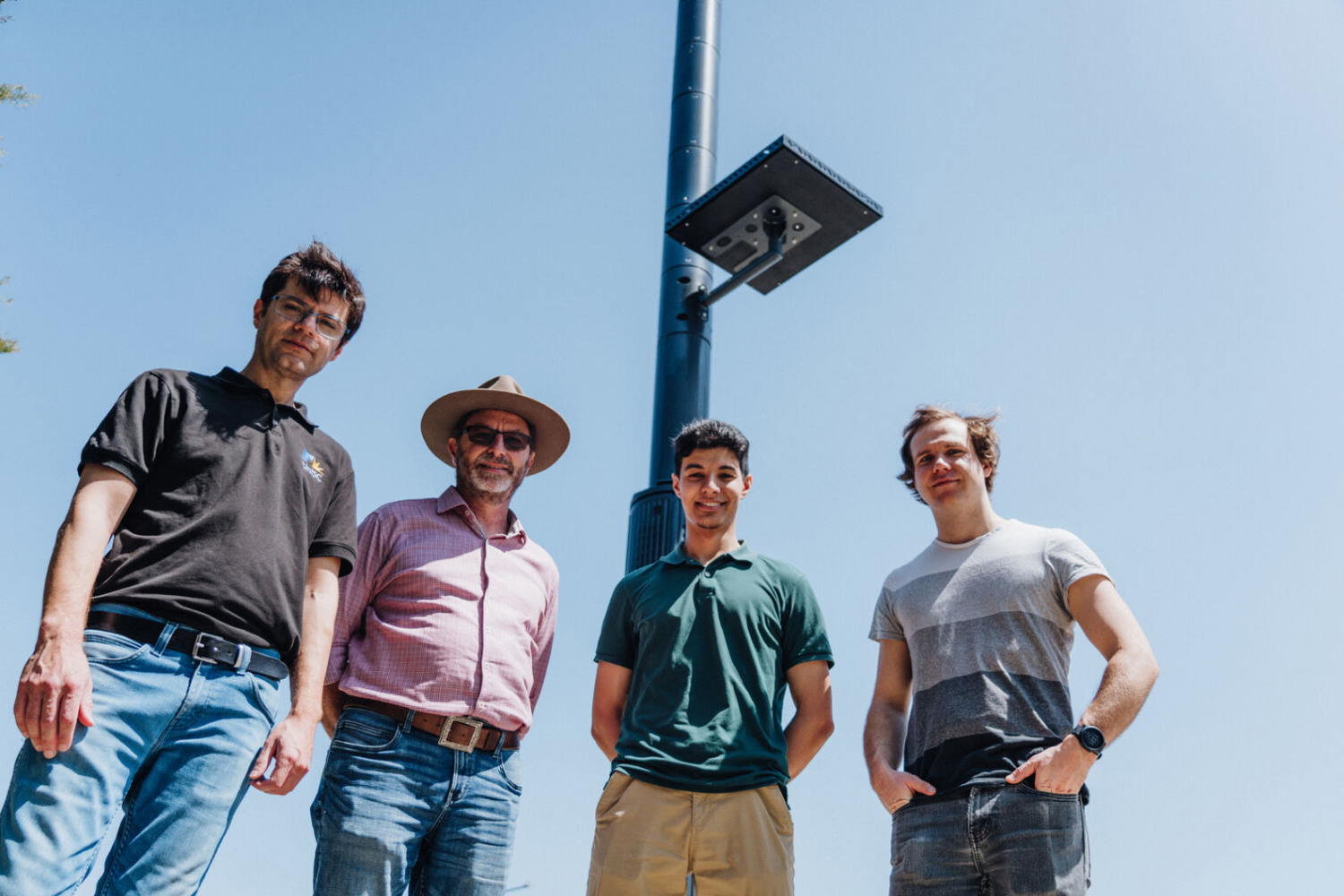Sky-high electric charging platforms that can extend the flying range of drones are being tested at the University of the Sunshine Coast’s state-of-the-art campus at Moreton Bay.
If successful, the platforms could cut downtime across a range of drone-based activities – from koala monitoring, communications, electric vehicle charging to disaster management.
Digital infrastructure provider ENE.HUB partnered with UniSC Mechatronics Engineering student Brett Devcich to test the eight-metre high charging platforms which will be installed at strategic locations across Moreton Bay.
Brett has been investigating how to best charge drones directly through their landing legs as part of his thesis, and then testing that design on the platforms both in the lab and in the field.
ENE.HUB General Manager Product Development Australia James Peet said the poles could cut an hour of commuting time on regular, long-range drone flights that require recharging.
“Because these are just light poles, you can put them wherever you need them to be. Rather than having a drone station back at mission control and driving back and forth from the survey site, you can spend a lot more time in the air doing actual work."
Batteries used for long-range delivery drones also tended to be larger and more expensive, making in-field charging a more economical solution, he said.
“For koala monitoring specifically, the platforms could charge a drone that could run a grid over a precinct and send back data wirelessly, allowing the automated capture of longitudinal data on the ongoing health of the koalas,” Mr Peet said.
Other functions could include charging for drones with ground-penetrating radar that allows identification of potholes before they form.
UniSC Discipline Lead Engineering Dr Adrian McCallum said the project illustrated how industry could draw on research expertise of the local university, while playing a vital role in educating engineering students.
“Our students have the opportunity to work directly with local businesses to innovate, be at the forefront of development, and to build relationships with industry leaders before they join the workforce,” Dr McCallum said.
Engineering courses at UniSC, including Civil Engineering, Electrical and Electronic, Mechanical and Mechatronic degree programs, have experienced a 20 percent boost in student numbers in the past year, with many students working with local industry on placement.
Mr Peet said there were big opportunities for local businesses to work alongside the local university, with many shared benefits.
“It’s a great opportunity for researchers and it adds a dimension to our work. We get solutions we wouldn’t get without that extra dimension,” he said.
“We are always on the lookout for innovators – and we understand the capabilities of the students coming out of the Mechatronics course, so it’s not just an opportunity for us to develop a new thing, but to also find the people who can work for us.”
Media enquiries: Please contact the Media Team media@usc.edu.au




